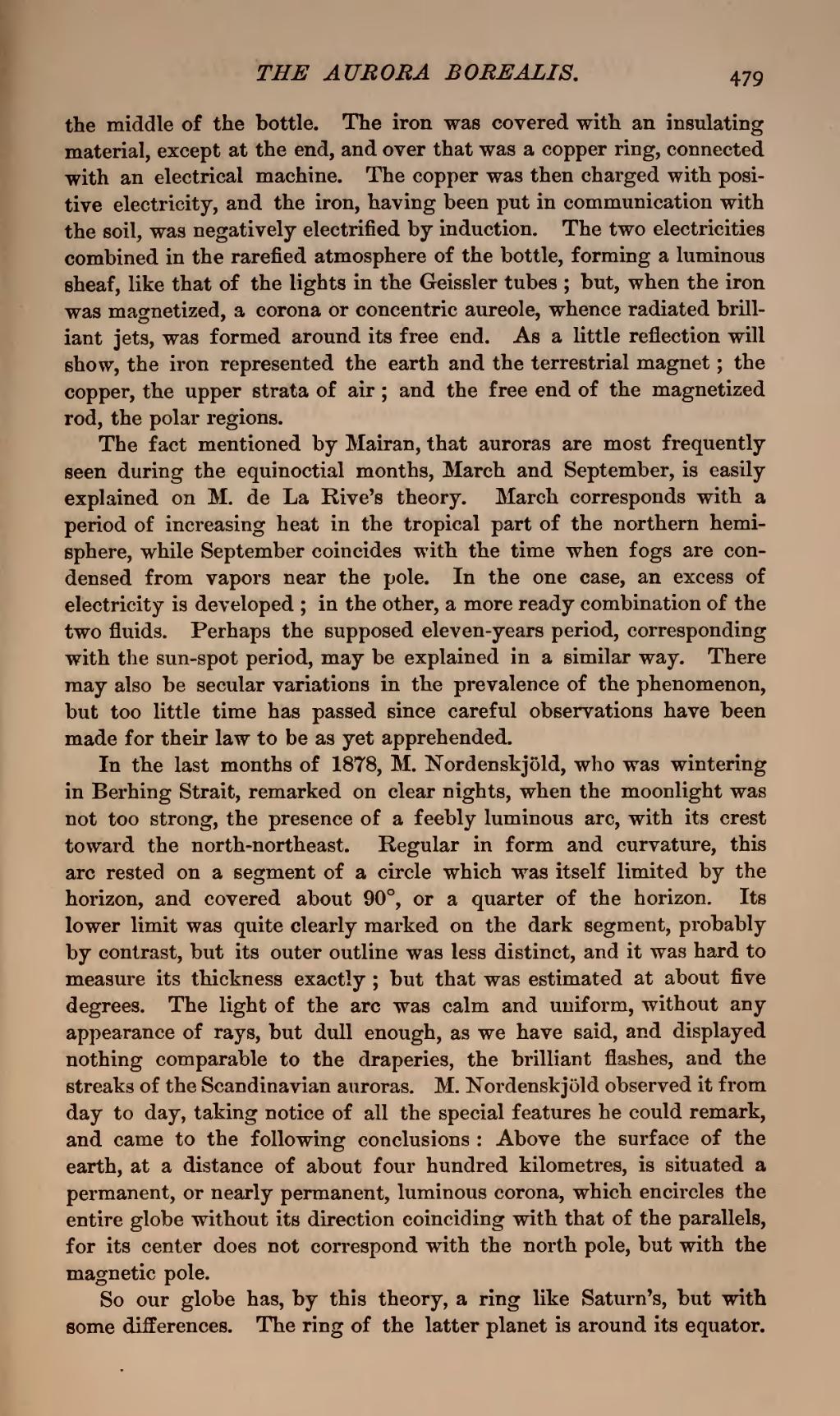the middle of the bottle. The iron was covered with an insulating material, except at the end, and over that was a copper ring, connected with an electrical machine. The copper was then charged with positive electricity, and the iron, having been put in communication with the soil, was negatively electrified by induction. The two electricities combined in the rarefied atmosphere of the bottle, forming a luminous sheaf, like that of the lights in the Geissler tubes; but, when the iron was magnetized, a corona or concentric aureole, whence radiated brilliant jets, was formed around its free end. As a little reflection will show, the iron represented the earth and the terrestrial magnet; the copper, the upper strata of air; and the free end of the magnetized rod, the polar regions.
The fact mentioned by Mairan, that auroras are most frequently seen during the equinoctial months, March and September, is easily explained on M. de La Rive's theory. March corresponds with a period of increasing heat in the tropical part of the northern hemisphere, while September coincides with the time when fogs are condensed from vapors near the pole. In the one case, an excess of electricity is developed; in the other, a more ready combination of the two fluids. Perhaps the supposed eleven-years period, corresponding with the sun-spot period, may be explained in a similar way. There may also be secular variations in the prevalence of the phenomenon, but too little time has passed since careful observations have been made for their law to be as yet apprehended.
In the last months of 1878, M. Nordenskjöld, who was wintering in Berhing Strait, remarked on clear nights, when the moonlight was not too strong, the presence of a feebly luminous arc, with its crest toward the north-northeast. Regular in form and curvature, this arc rested on a segment of a circle which was itself limited by the horizon, and covered about 90°, or a quarter of the horizon. Its lower limit was quite clearly marked on the dark segment, probably by contrast, but its outer outline was less distinct, and it was hard to measure its thickness exactly; but that was estimated at about five degrees. The light of the arc was calm and uniform, without any appearance of rays, but dull enough, as we have said, and displayed nothing comparable to the draperies, the brilliant flashes, and the streaks of the Scandinavian auroras. M. Nordenskjöld observed it from day to day, taking notice of all the special features he could remark, and came to the following conclusions: Above the surface of the earth, at a distance of about four hundred kilometres, is situated a permanent, or nearly permanent, luminous corona, which encircles the entire globe without its direction coinciding with that of the parallels, for its center does not correspond with the north pole, but with the magnetic pole.
So our globe has, by this theory, a ring like Saturn's, but with some differences. The ring of the latter planet is around its equator.
